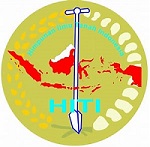ANALISIS KADAR HARA NITROGEN TOTAL PADA TANAH SAWAH DI TAPADAKA KECAMATAN DUMOGA TENGGARA KABUPATEN BOLAANG MONGONDOW
DOI:
https://doi.org/10.35791/se.21.3.2021.38762Keywords:
total Nitrogen, paddy field, composite soil samplingAbstract
ANALYSIS OF NUTRIENT CONTENT OF TOTAL NITROGEN ON PADDY FIELD OF TAPADAKA VILLAGE OF SOUTHEASTERN DUMOGA DISTRICT OF BOLAANG MONGONDOUW REGENCY
Research was aimed to analyze the content of Nitrogen on paddy field area of Tapadaka Village of Southeastern Dumoga District of Bolaang Mongondouw Regency. This place was conducted for soil sampling. Soil analysis was in the Laboratory of Ecophysiology of BALIT PALMA, Mapanget Village, Talawaan District, North Minahasa Regency, North Sulawesi Province. The research was conducted by using the method of Survey with composite-sampling soils in technically (whether systematic, or random) for two months. Each composite sampling soil has taken in one area for three points of different plots then mixed them into one plastic bag. There were nine composite samples, i.e. in codes of P1A, P2A, P3A, P1B, P2B, P3B, P1C, P2C, and P3C. The soils samples were both analyzed directly in field by using Paddy field Soil Test Device and kjedahl Method in laboratory. Results of this study were analyzed that nutrient content of total Nitrogen by using Paddy field Soil Test Device was categorized in low, and the total Nitrogen for all samples were about 0.05% - 0.25% in criteria of very low to moderate.
Downloads
How to Cite
Issue
Section
License
Authors who publish in this journal agree to the following terms:
Authors hold their copyright and grant this journal the privilege of first publication, with the work simultaneously licensed under a Creative Commons Attribution License that permits others to impart the work with an acknowledgment of the work's origin and initial publication by this journal.
Authors can enter into separate or additional contractual arrangements for the non-exclusive distribution of the journal's published version of the work (for example, post it to an institutional repository or publish it in a book), with an acknowledgment of its underlying publication in this journal.
Authors are permitted and encouraged to post their work online (for example, in institutional repositories or on their website) as it can lead to productive exchanges, as well as earlier and greater citation of the published work (See The Effect of Open Access).




